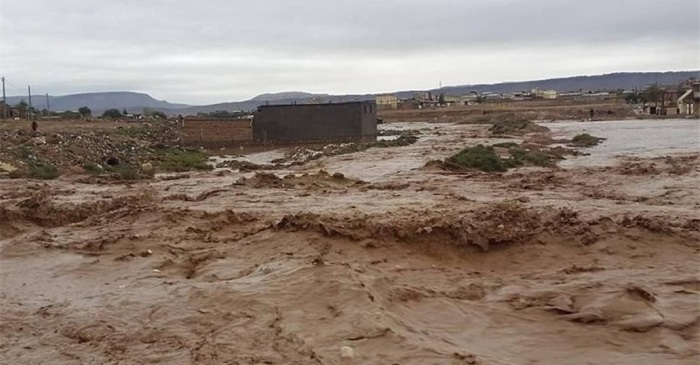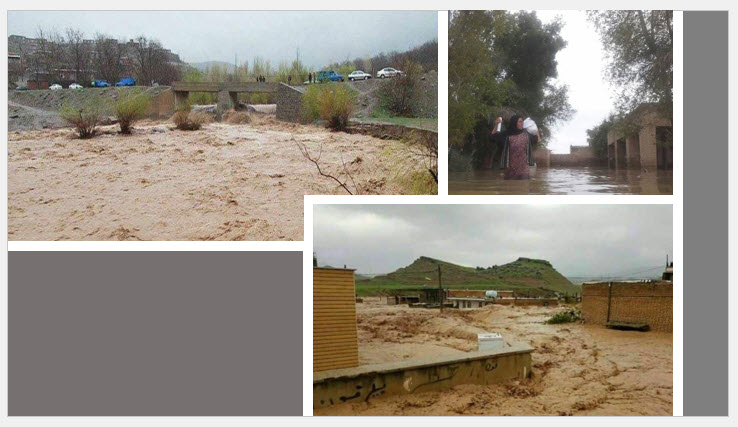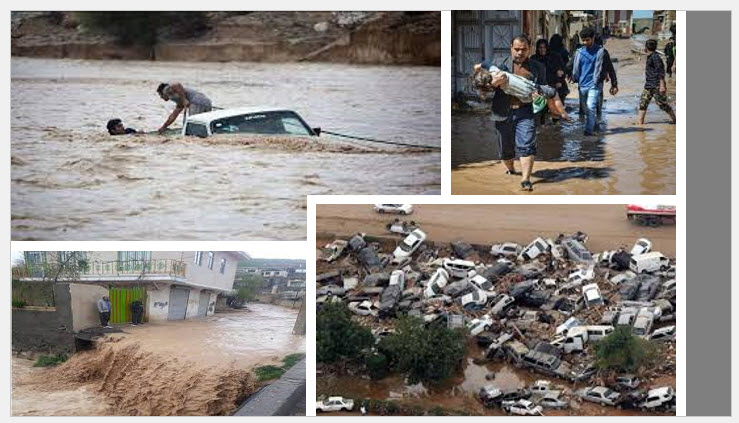
Iran’s landscape has been devastated by severe flooding and landslides for the past two weeks. Combined with other significant flaws and poor management, this circumstance created the conditions for widespread casualties and significant losses across 27 provinces.
The clerical regime in power in Iran, however, leaves people defenseless in such circumstances, either because the accountable parties are totally absent or because the authorities find satisfaction in taking pictures of themselves in tuxedos amidst the destruction.
Iran has a reputation for experiencing both floods and droughts. Floods are primarily caused by heavy rainfall, sometimes in conjunction with snowmelt, and their frequency has risen recently as a result of deforestation, overgrazing of rangelands, desertification, poor management of water resources, and a lack of adequate watershed management.

Iran has experienced unprecedented rainfall over the past fifty years over the past few decades, but last year the nation was hit by a drought, with data from the authorities showing a 50% drop in rainfall. Even now, and on several occasions this year, various sections of the clerical regime have claimed that water shortages are imminent and severe. The regime official, however, is unable to effectively manage and utilize them once there is so much water on hand.
Extreme rainfalls over the past three years have gradually led some experts to declare that Iran has entered a period of wet spells after experiencing dry spells for the previous few decades and that a wet spell will embrace the country. Others strongly disagreed with this assertion, claiming that over the previous 50 years, the country had experienced an average of 50 mm of rain shortage.

Flooding results in a range of issues. Human life lost, resettlement, and economic devastation, are frequently the most severe. Floods significantly increase the risks and spread of contagious illnesses like cholera and typhoid fever. Due to the potential for sewage contamination of water supplies, they are more likely to spread during flooding.
Flooding damages buildings, infrastructures, and people’s livelihoods for millions of dollars over time. After a significant flood, business loss, livestock damage, and many other things, there is likely to be economic instability. Food supplies are being destroyed, and additional economic losses could result in famine and widespread poverty. Because of this, managing floods and other natural disasters is crucial for the welfare of any community.

Under the more than 40-year clerical regime’s rule, Iran has experienced all of the descriptions made in the aforementioned statements, and they continue to do so with all of their consequences. Not only do they commit serious human rights violations, but they also destroy the nation’s natural ecosystems, water resources, and other natural resources in general. Anyone can see these devastations in every corner of the country, which is managed and delegated by the corrupt IRGC and major religious foundations under the supervision of the Supreme Leader.
 MEK Iran (follow us on Twitter and Facebook), Maryam Rajavi’s on her site, Twitter & Facebook, NCRI (Twitter & Facebook), and People’s Mojahedin Organization of Iran – MEK IRAN – YouTub
MEK Iran (follow us on Twitter and Facebook), Maryam Rajavi’s on her site, Twitter & Facebook, NCRI (Twitter & Facebook), and People’s Mojahedin Organization of Iran – MEK IRAN – YouTub







